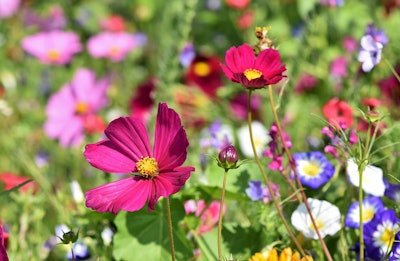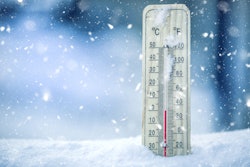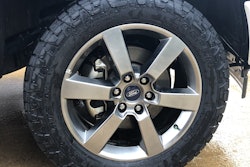
“Large or small, the benefits of a wildflower ‘patch’ are numerous,” says Dani Carroll, an Alabama Extension regional agent specializing in home grounds, gardens and home pests. “Environmentally, the pollinators will love you. Honey bees and native bees, along with butterflies and other pollinators will enjoy the continuous food source – nectar.”
Wildflower gardens can be used to define a property line, help control erosion, or simply create an oasis of beautiful colors throughout the seasons.
When to plant
While no one is debating whether wildflower gardens can enhance a landscape, there is a significant amount of contrasting information out there as to when is the best time to create a wildflower meadow.
A majority of sources say that it is best to plant wildflower seeds in the fall, as the winter cold and snow promote seed germination in the following spring.
David Salman, founder and chief horticulturist at High County Gardens in Santa Fe, New Mexico, says for perennial wildflower seeds that need pre-chilling, these can even be sown in the winter.
“The whole point of (winter sowing) wildflower seed mixes is to avoid having to transplant seedlings, as this is highly labor intensive,” he tells HGTV. “Seed is relatively inexpensive, and we should sow many more seeds than will reasonably germinate. This is how nature does it; release a million seeds and get one hundred plants.”
On the other side of the spectrum, American Meadows stresses the importance of planting wildflower seeds in the spring once all the threat of late frosts have passed. It says the ideal soil temperature for wildflower seeds to sprout and develop is 55 degrees Fahrenheit.
Meanwhile, the Iowa State University Extension says wildflowers can be planted in spring, summer or fall with each season having its own disadvantages and advantages.
Choosing the right seeds
Determining what type of wildflowers your customer wants can help clear up when you need to start planting and if the seeds do need a chilling period in order to break dormancy.
It is best to purchase seed mixes that are native to your client’s specific area. Generic seed mixes will contain species that may or may not do well. The size of the area you are working with will decide whether you need to purchase the seeds in bulk or not.
According to Lauren Dunec Hoang with Houzz, a 2.3-ounce canister can cover 600 to 700 square feet. Anything larger than that should be bought in bulk.
Your seed mix should be a combination of perennials, annuals and biennials with staggered bloom times so there is always something flowering throughout the year. Make a point to ensure the wildflowers you’re planting are not on your state’s noxious weed list.
While your customer may only be thinking about adding flowers, including native grasses can help fill in spaces around the flowers, preventing weeds from gaining a foothold and providing support and protection for tall flowers.
Prep the soil
Once you’ve settled on the right seed mix for your clients, it’s time to prep the soil for planting. After finding a space that receives at least four to six hours of sun a day, you’ll need to clear that section of weeds, grasses and other plants so the wildflower seeds will not have to deal with any competition.
Depending on how much time you have before your planting date, there are different methods when it comes to how to clear the patch of soil. If you’re planning to plant within a week, you’ll only have time for tilling and pulling roots out with hand tools.
With three or so months to spare, you can afford to use herbicides to kill off any weeds and for the chemicals to dissipate before its time to plant the seeds. If you have more than six months before having to plant a wildflower garden, you can opt to use plastic sheeting or other materials to kill weeds by smothering them.
Next, break up any clods and remove rocks in the soil. If working with heavy clay soils, incorporate organic matter such as compost to help with drainage.
Plant the seeds
When the soil is ready, mix the wildflower seeds with sand before broadcasting to ensure uniform application.
To guarantee good seed to soil contact, lightly rake and tamp or roll the area.
“After seeding, apply a thin layer of mulch, preferably weed-free, grain straw, pine needles or composted pine-bark mulch, to conserve soil moisture and to protect seeds and young seedlings from bird damage,” Carroll says. “Avoid using hay mulches that are often infested with weed seeds.”
Keep the area moist for four to six weeks during germination and development if natural precipitation is insufficient.
Maintenance
Once the wildflowers are established, pull weeds as they appear and provide supplement water during dry spells.
It can be hard to tell a weed seedling from a wildflower seedling when plants are young. Since this is the best time to pull weeds, look up what the seedings of the wildflowers look like in your seed mix to be able to distinguish between them and invasive weeds.
When in doubt, wait it out. As the seedlings mature, you’ll be able to distinguish the weeds from the wildflowers.
Generally, wildflower gardens should be mowed at least once a year in late fall after the plants brown from a killing frost or early spring at a height of four to six inches.









